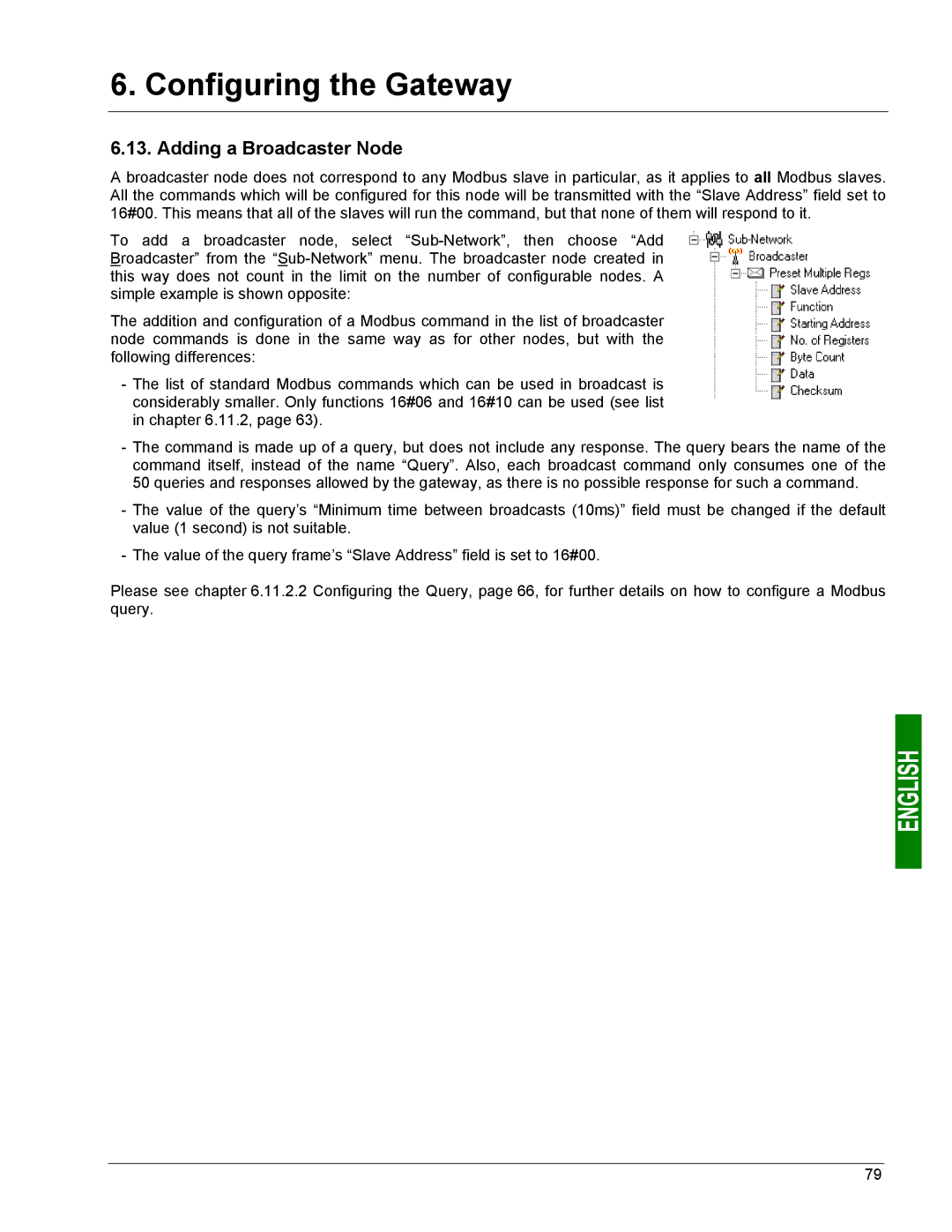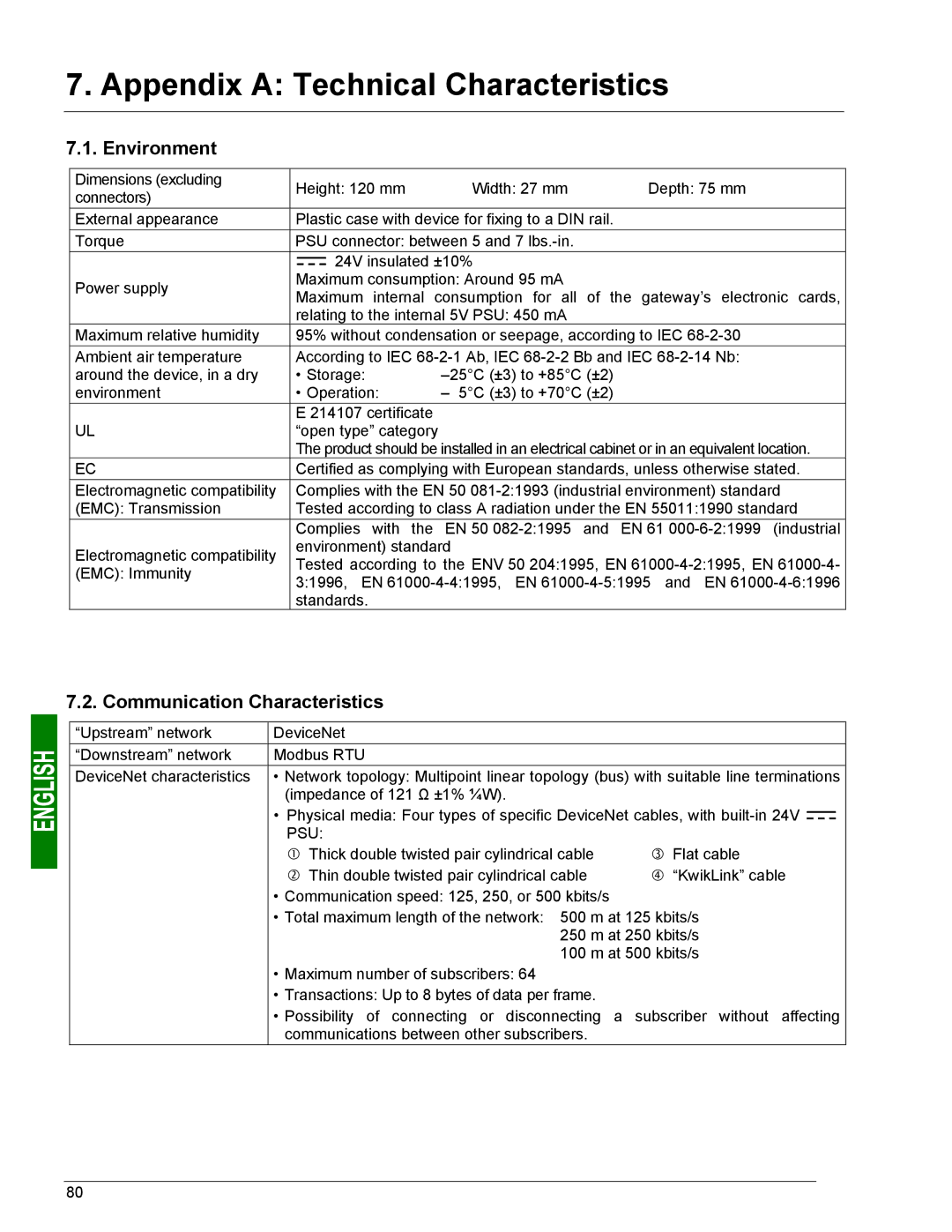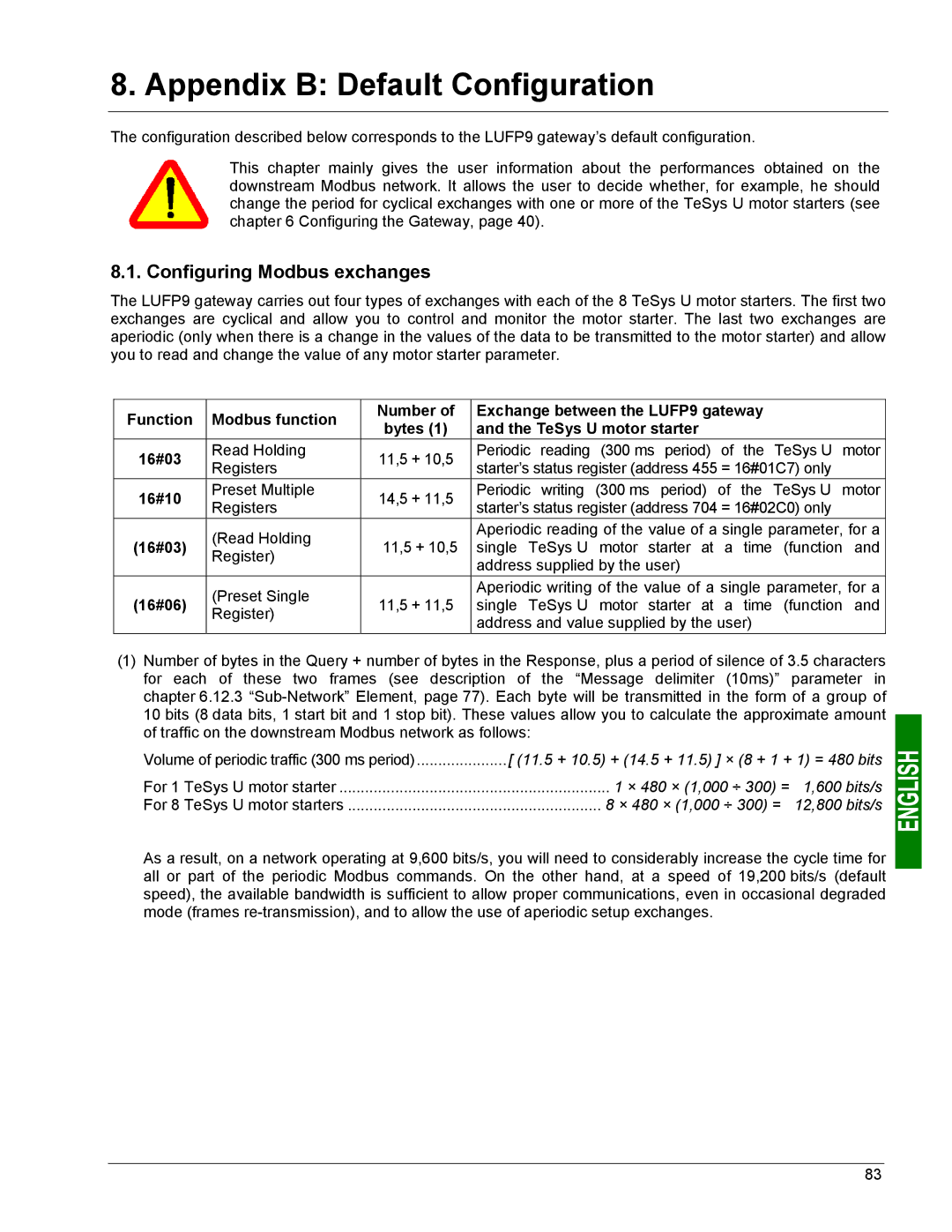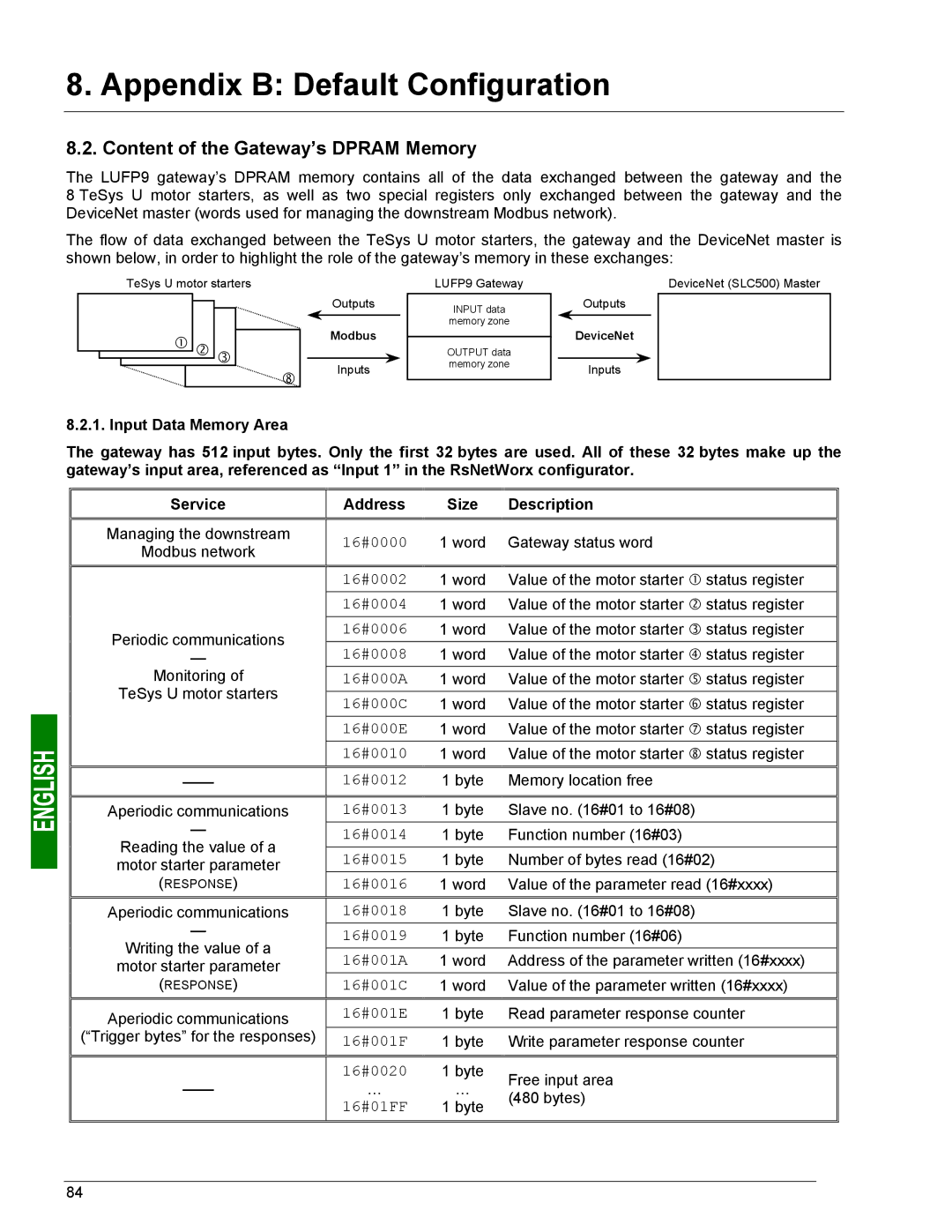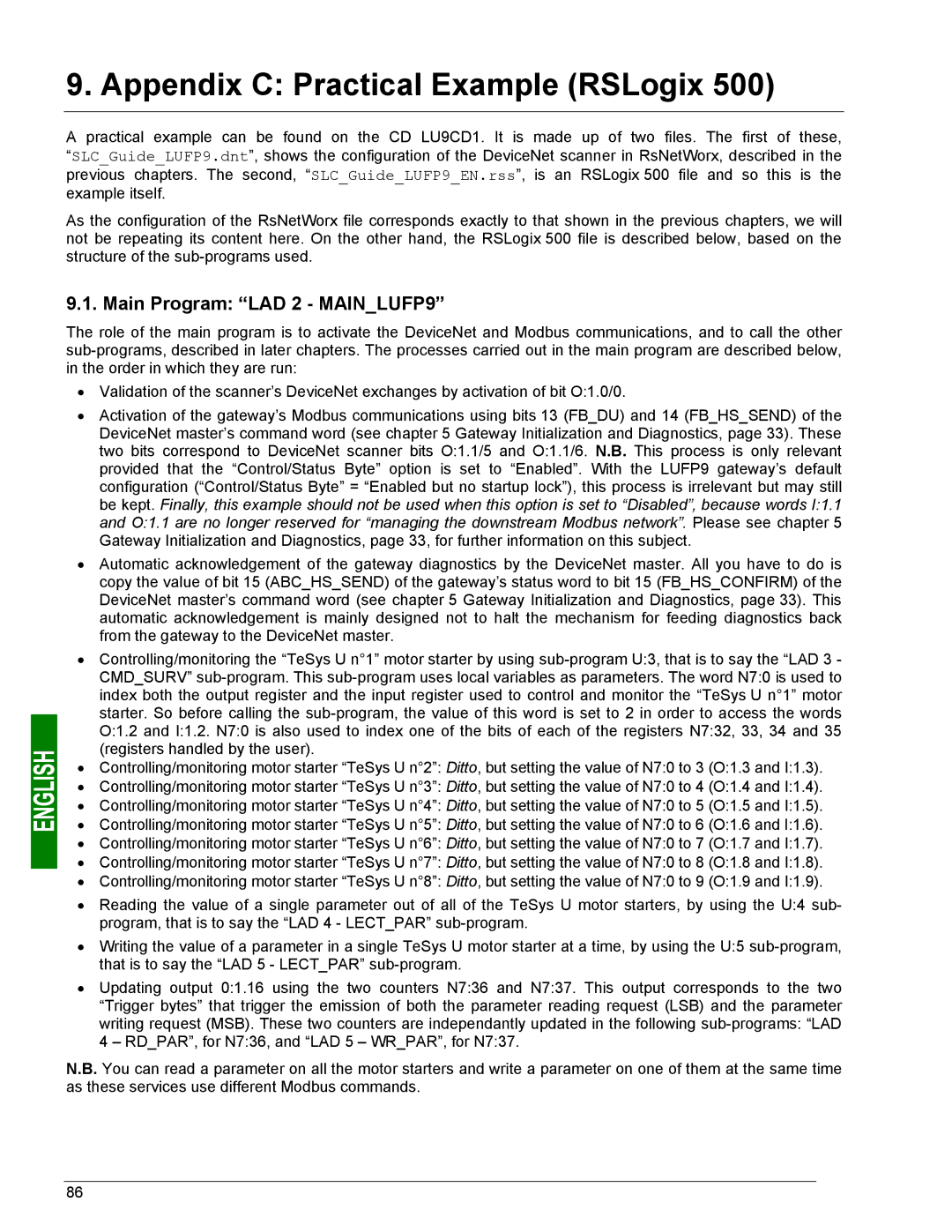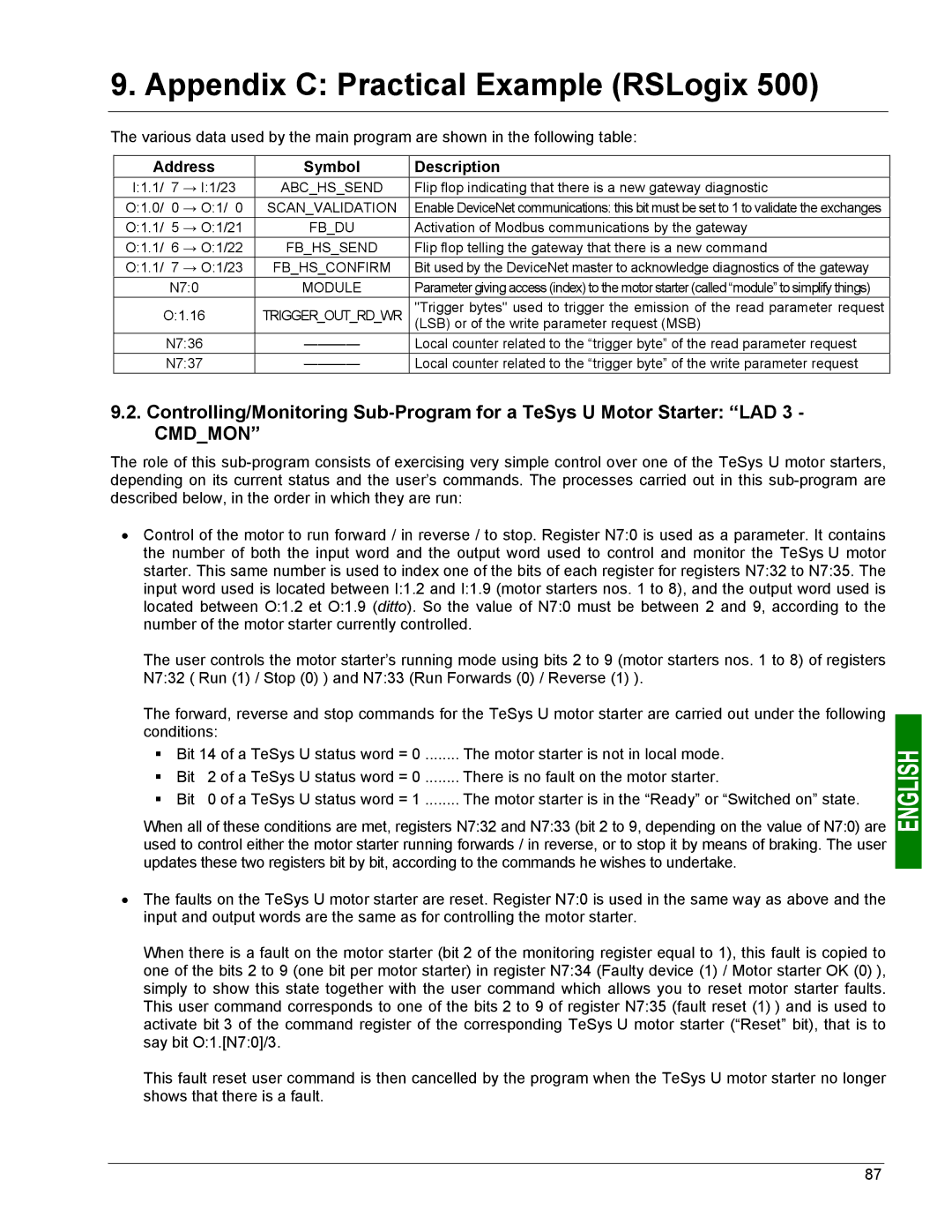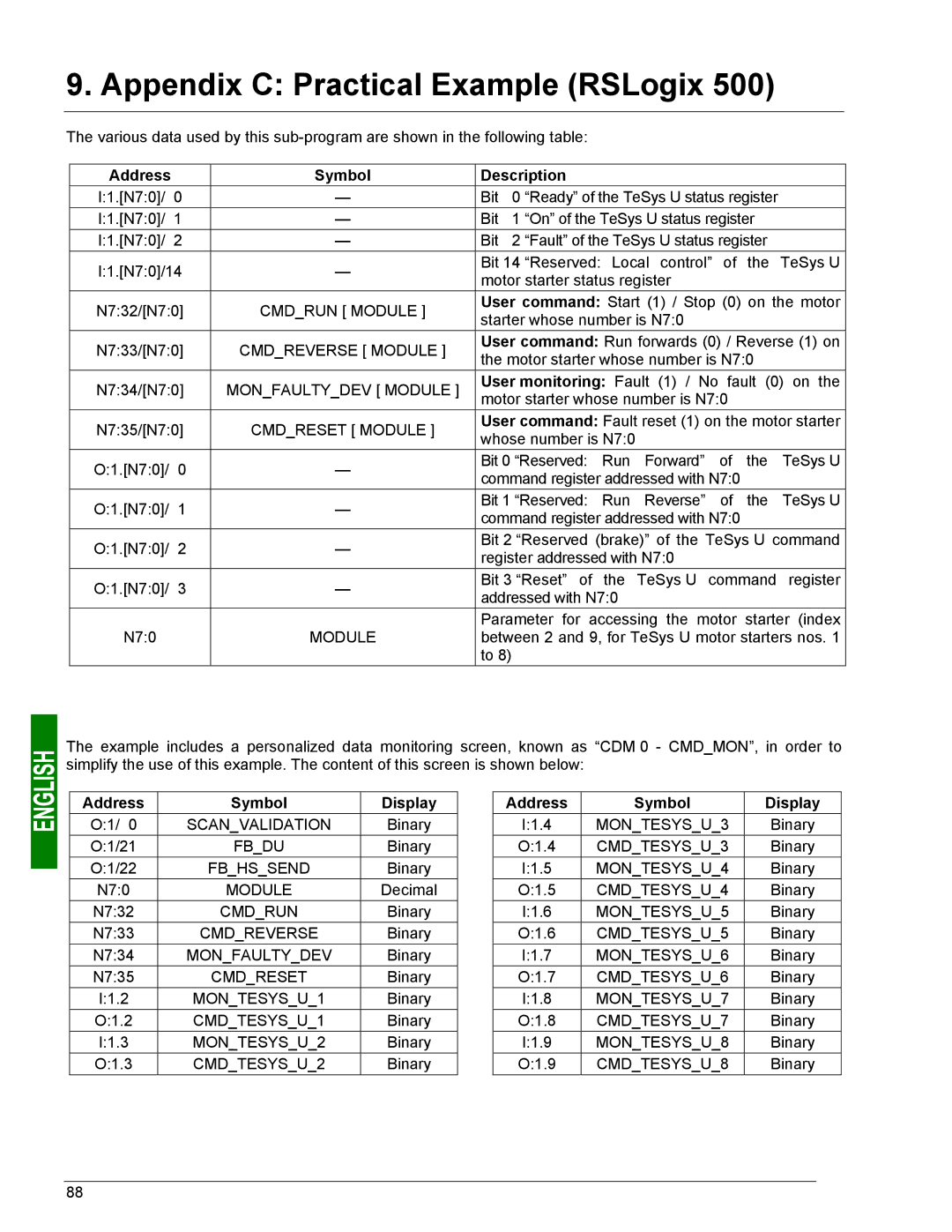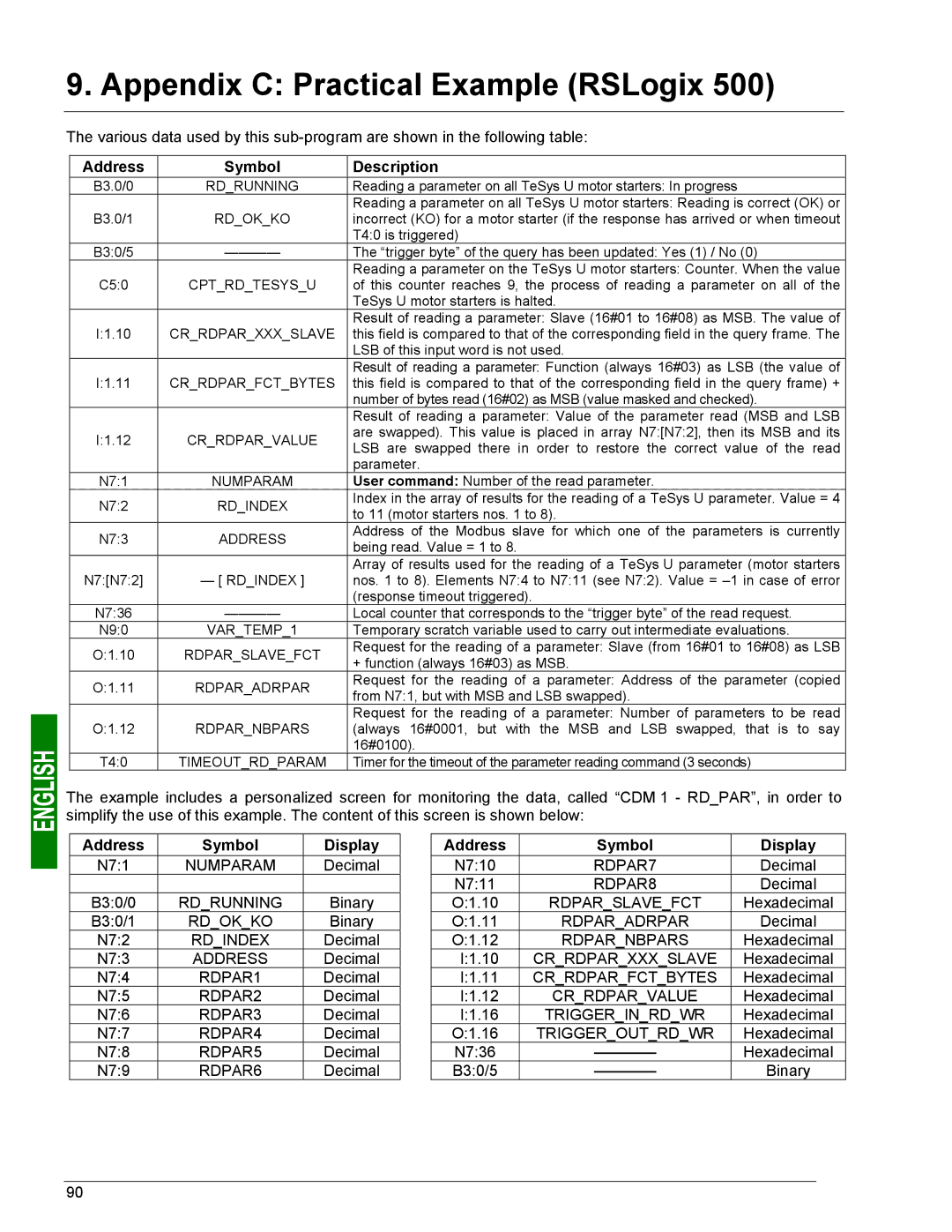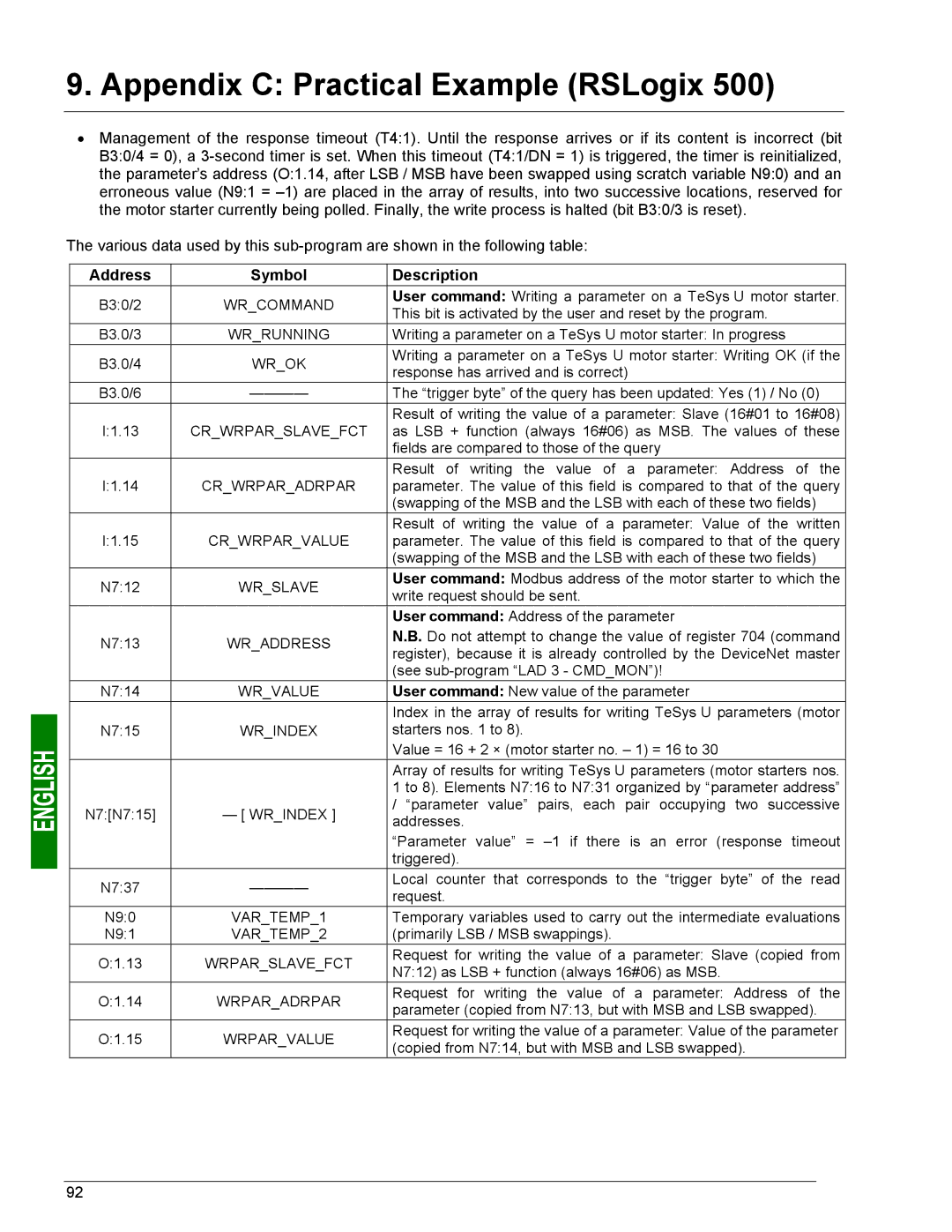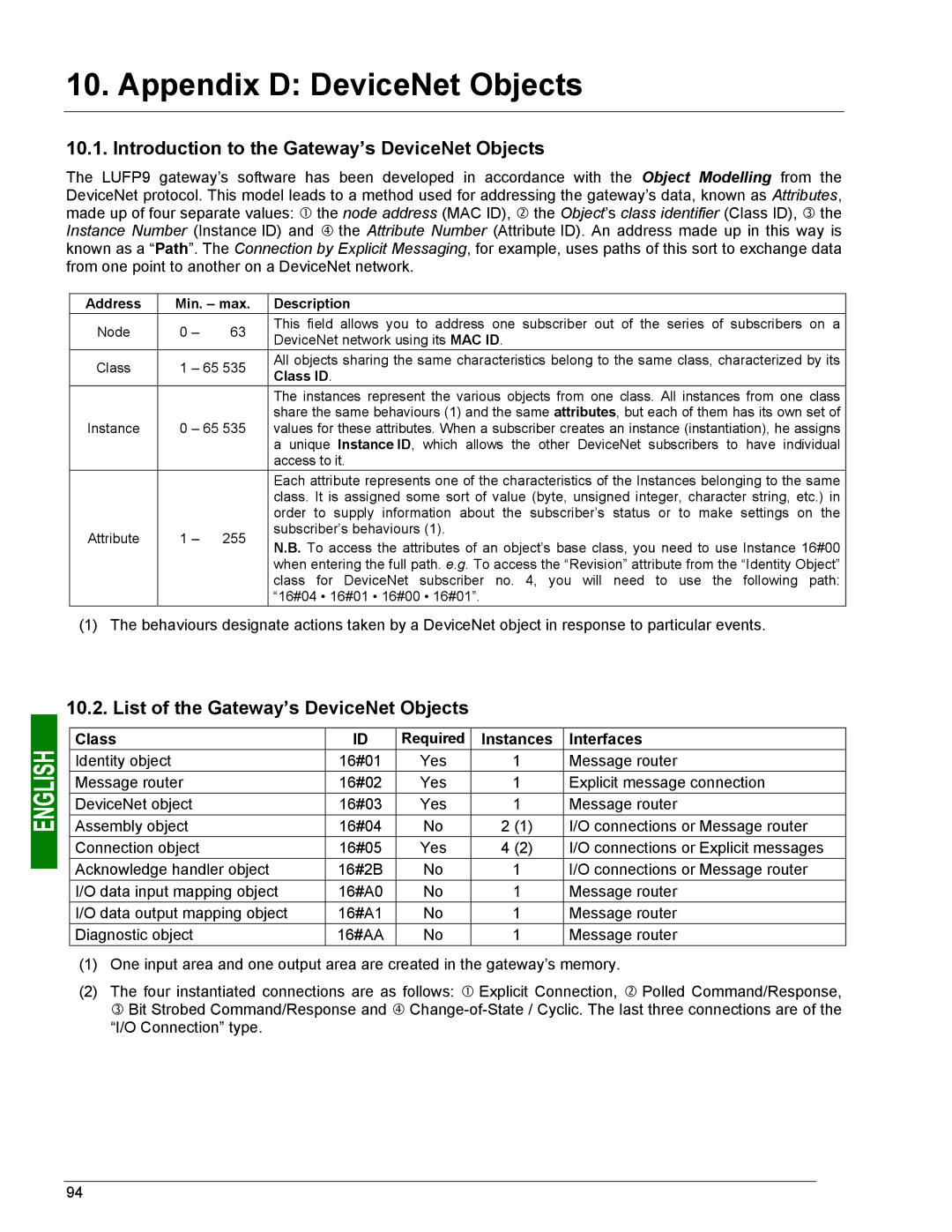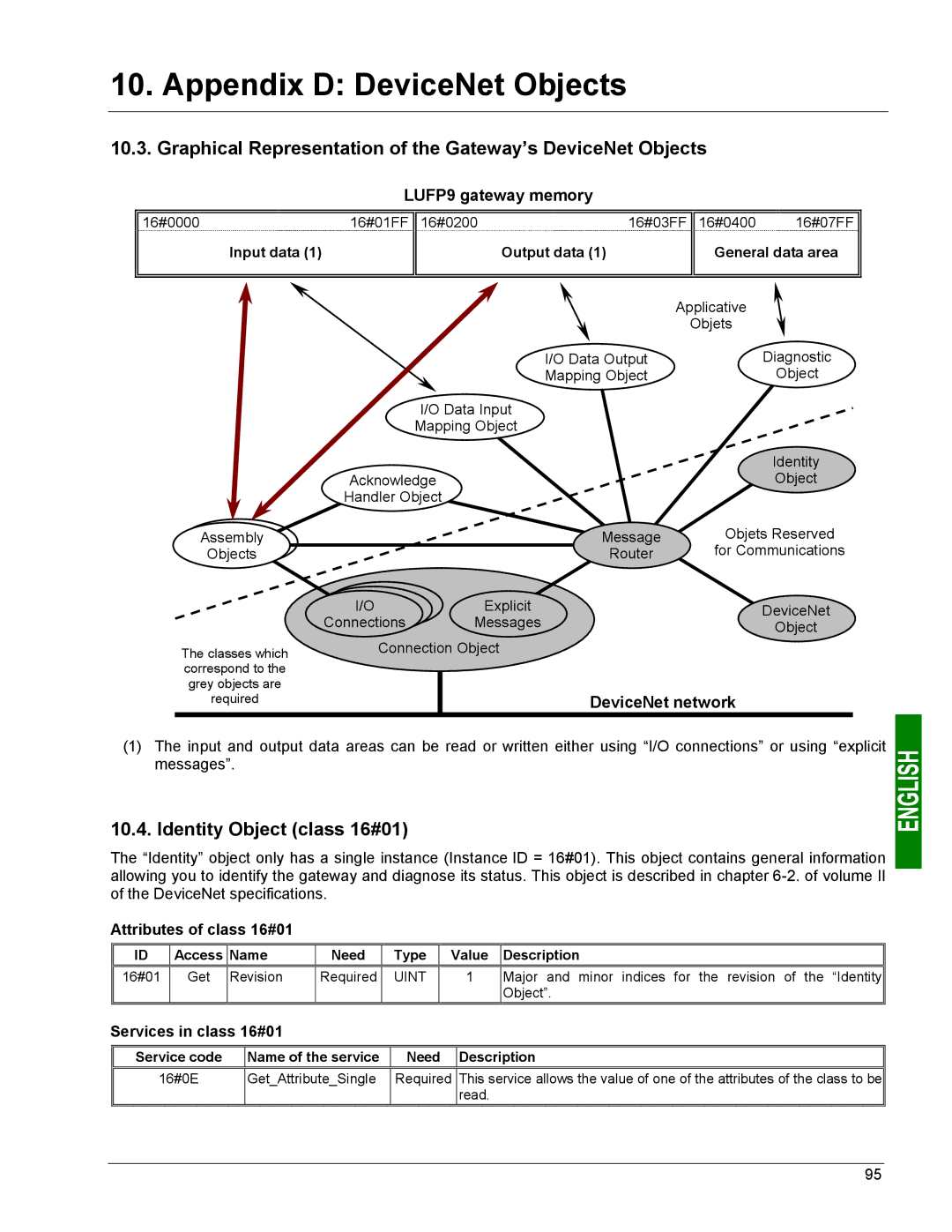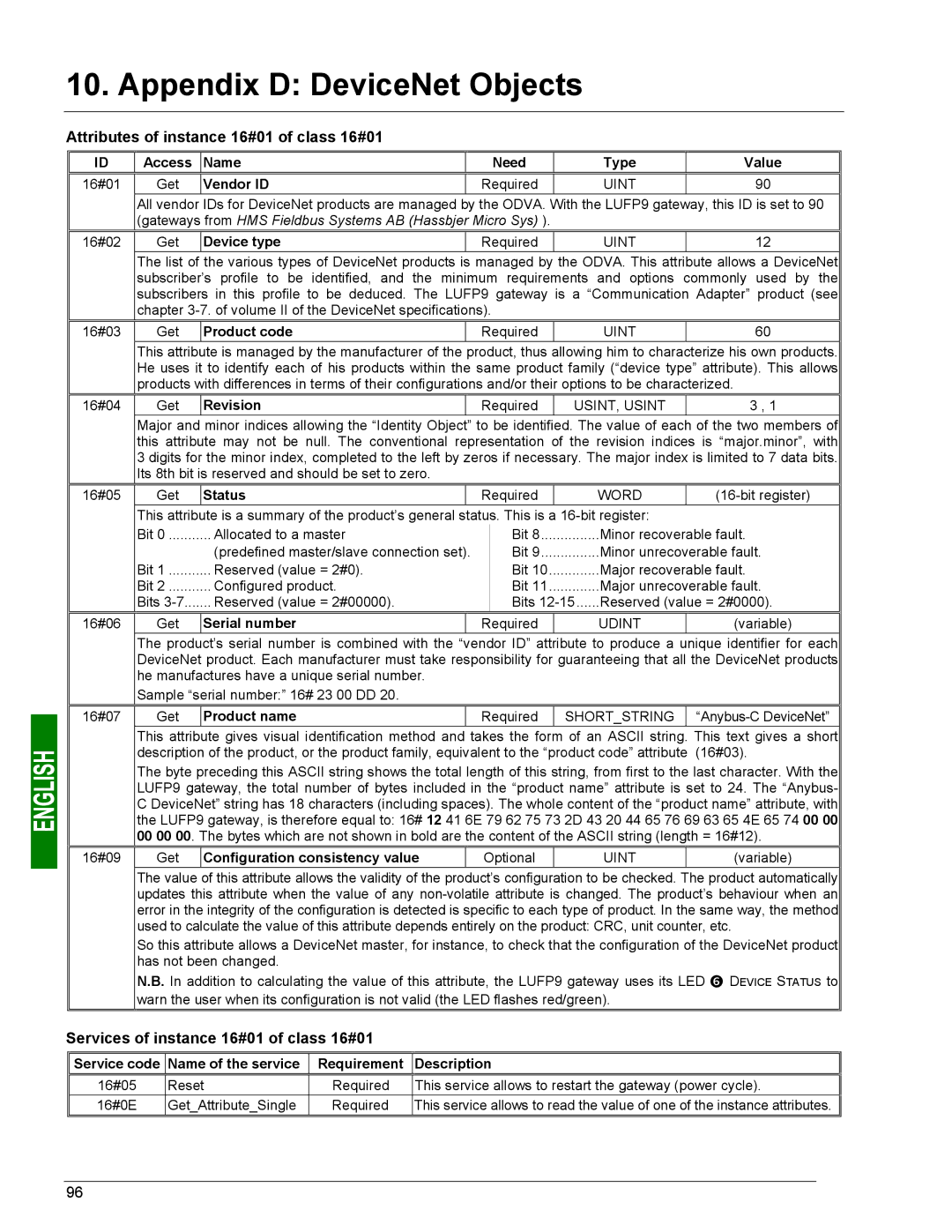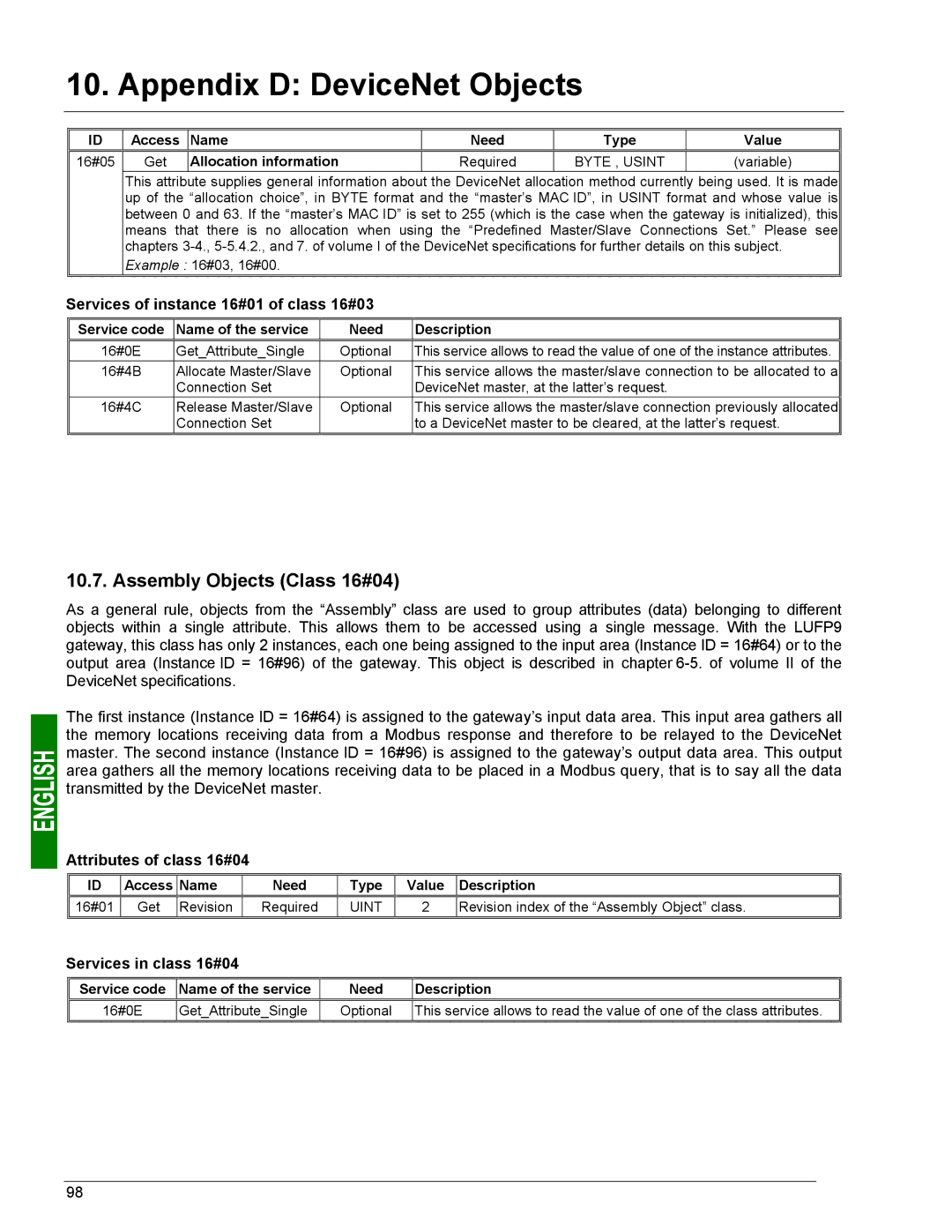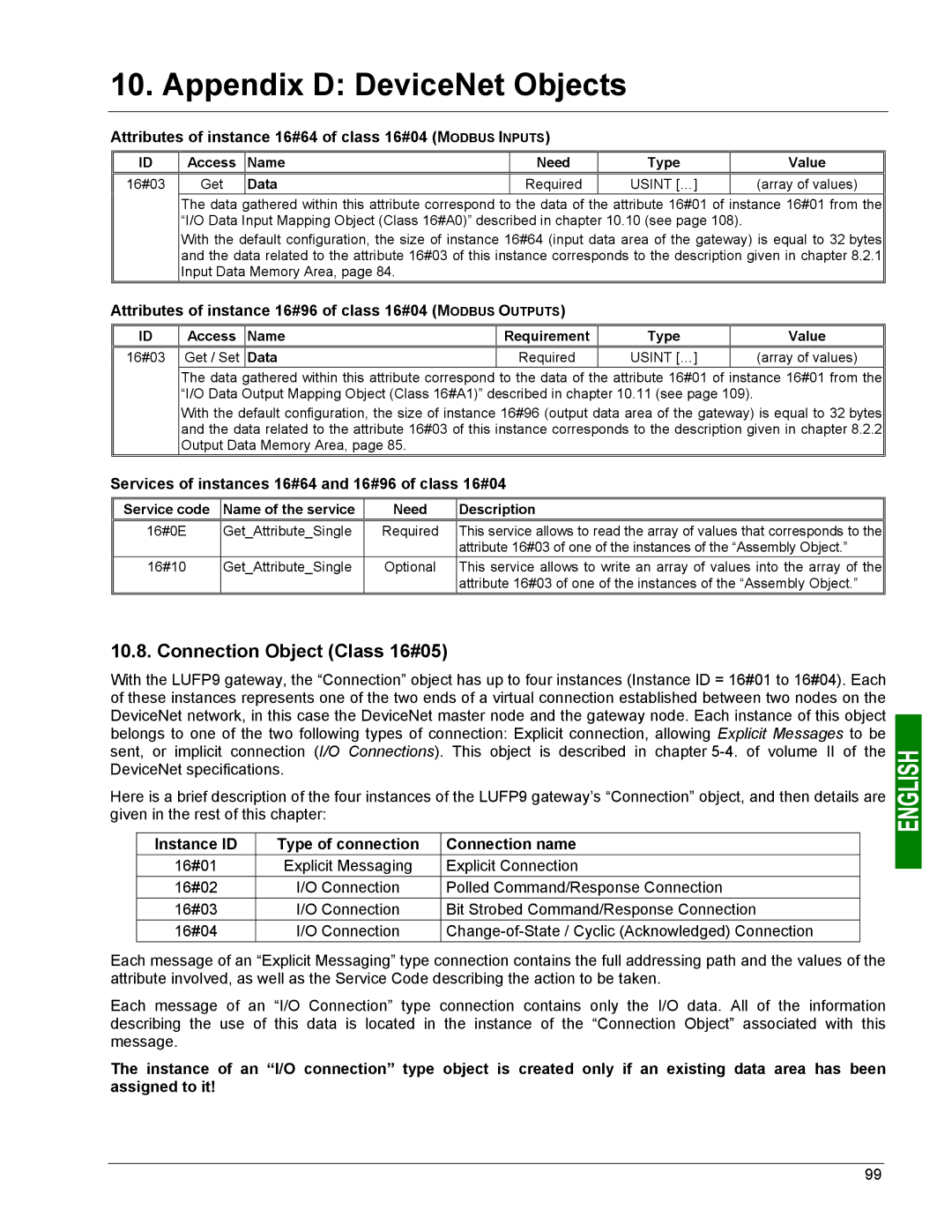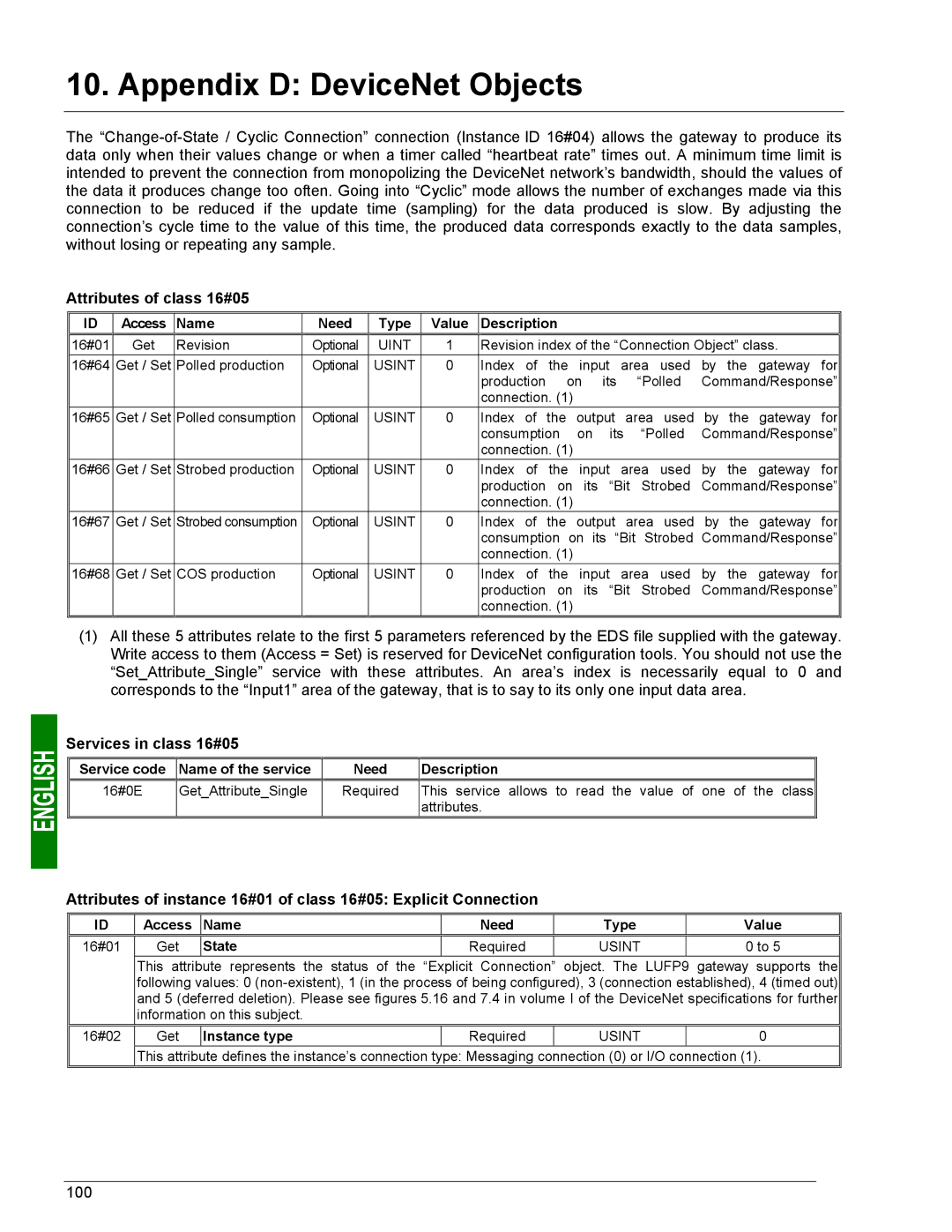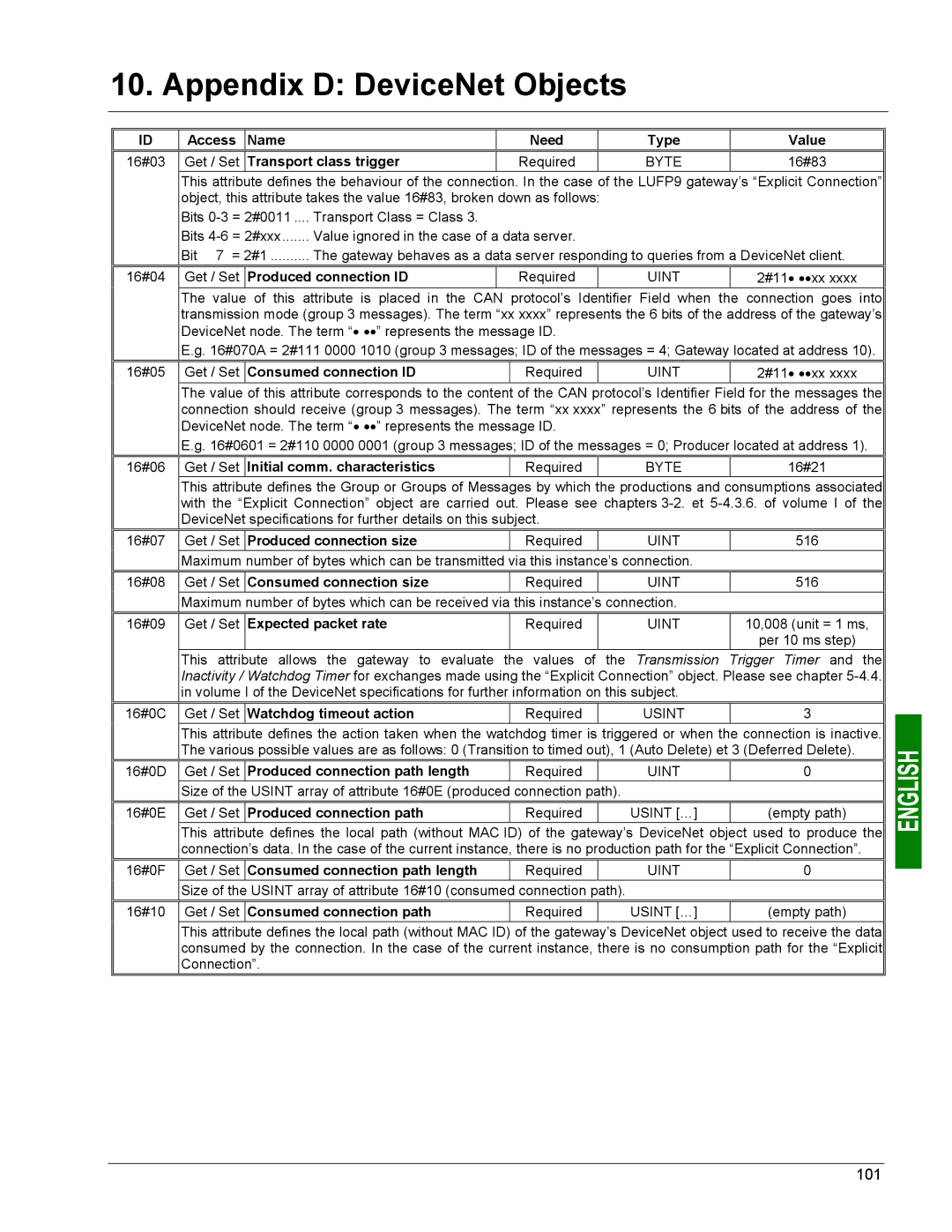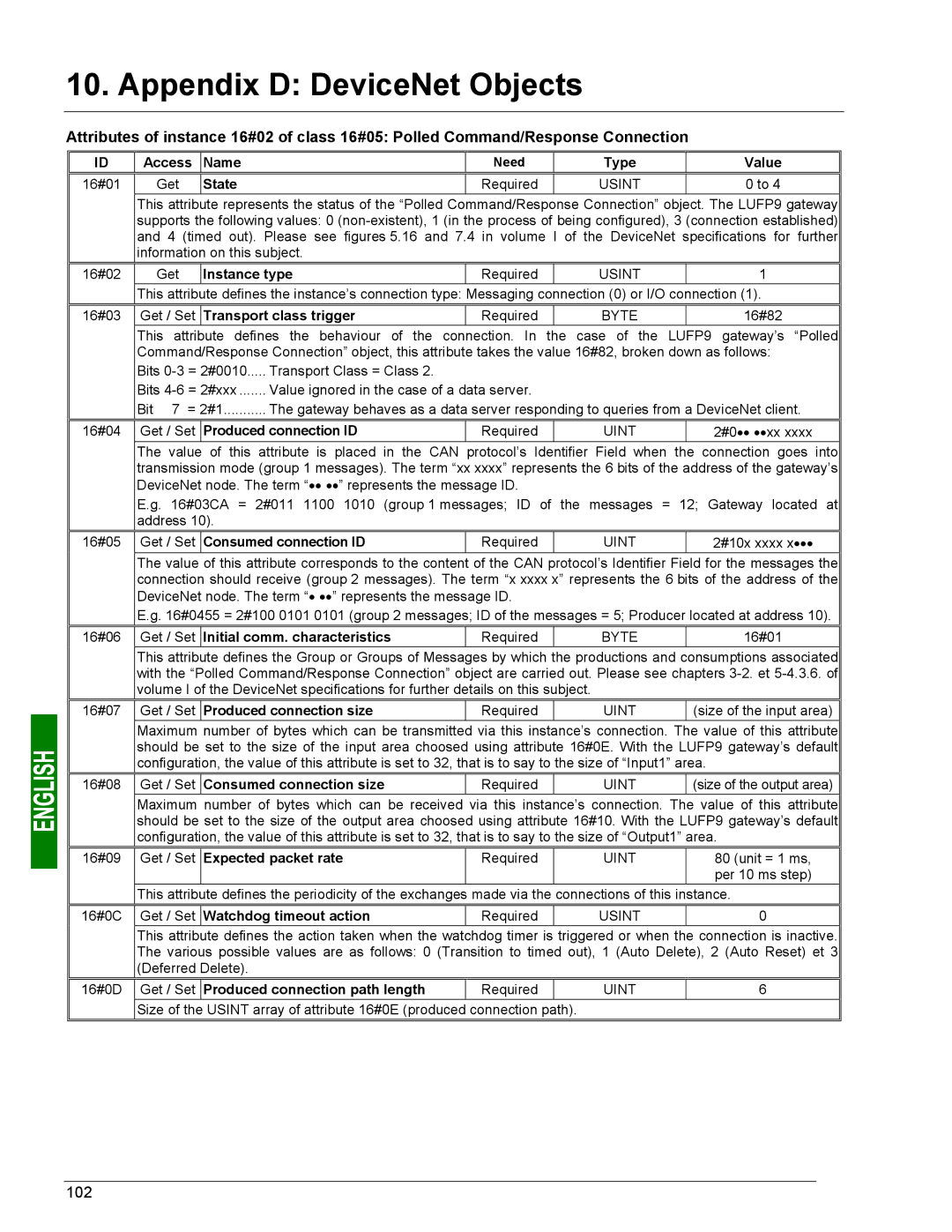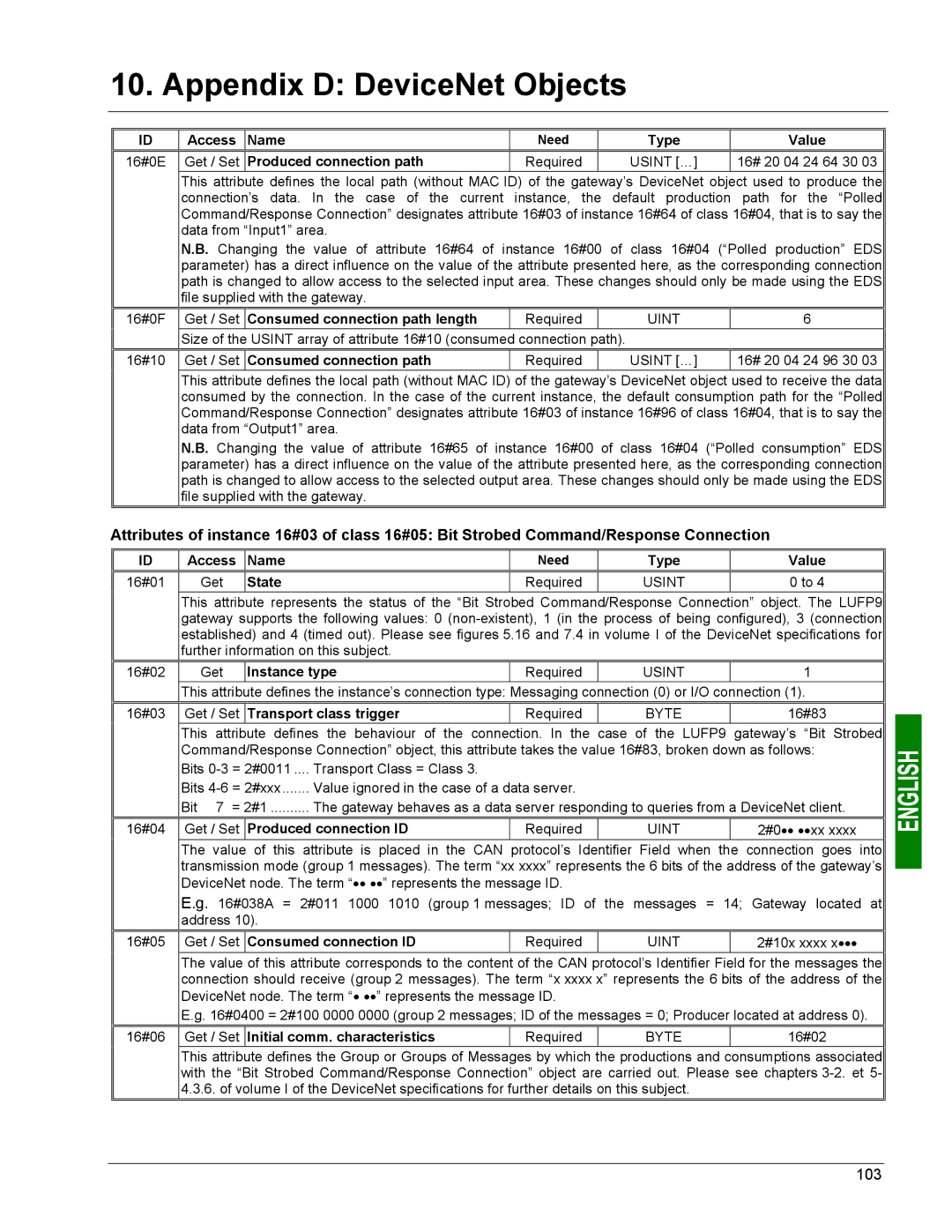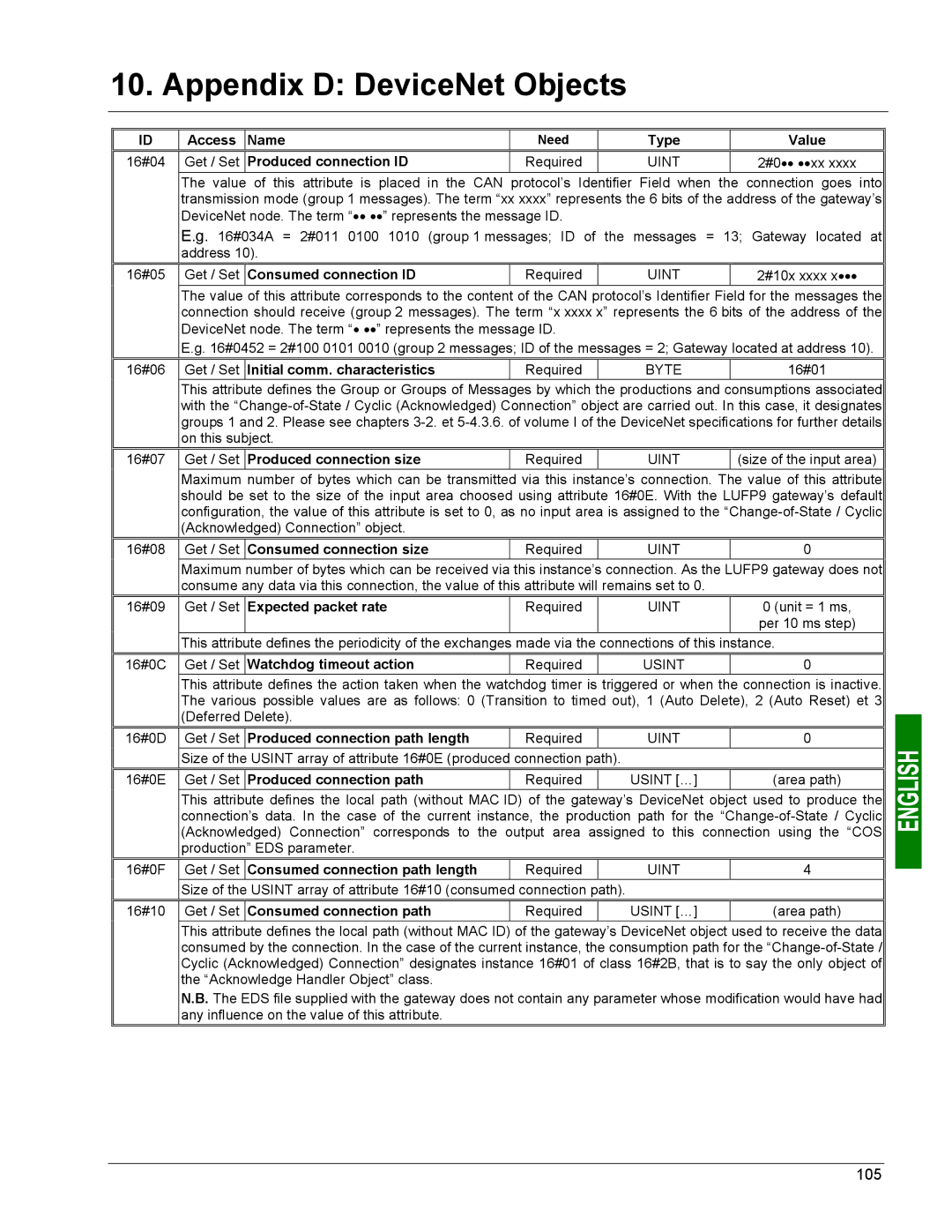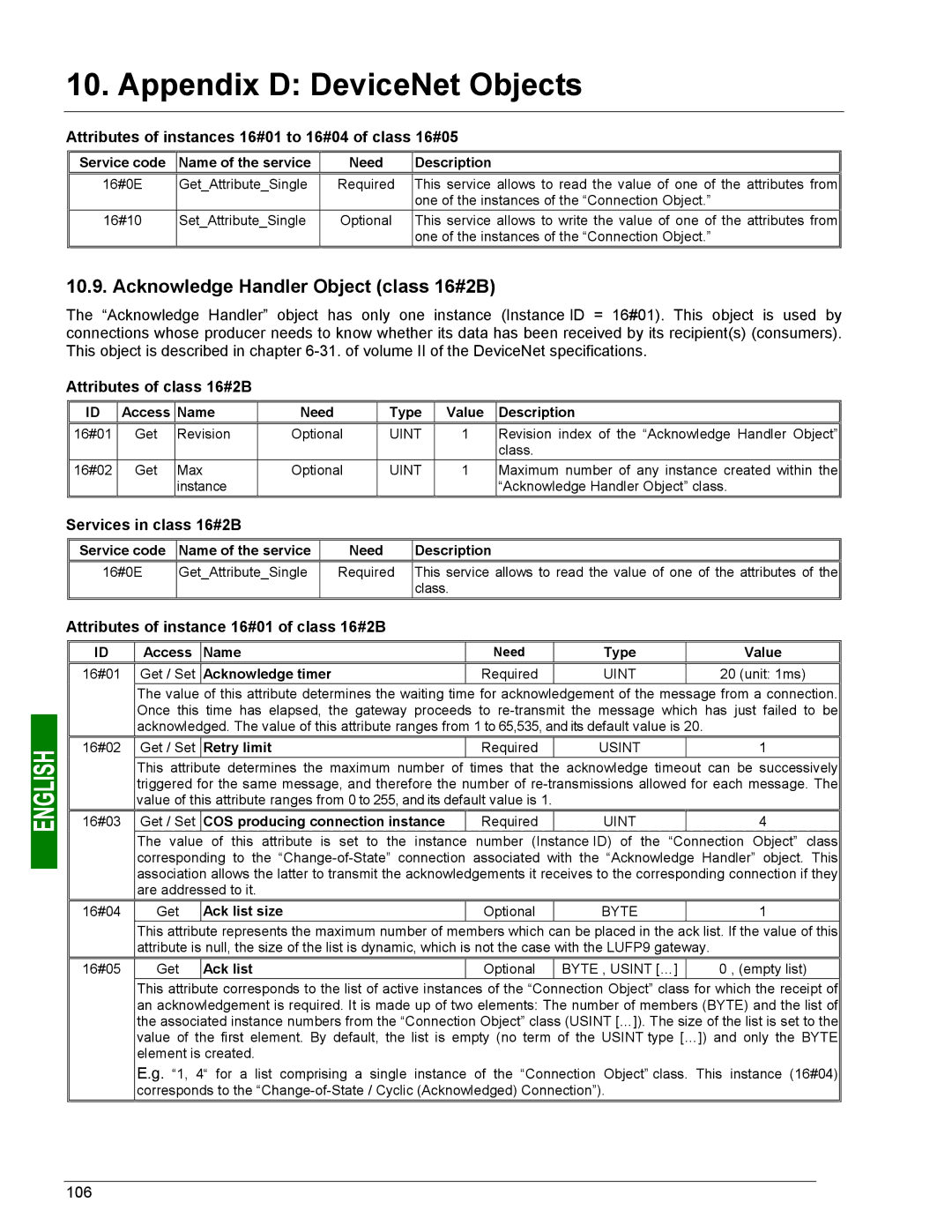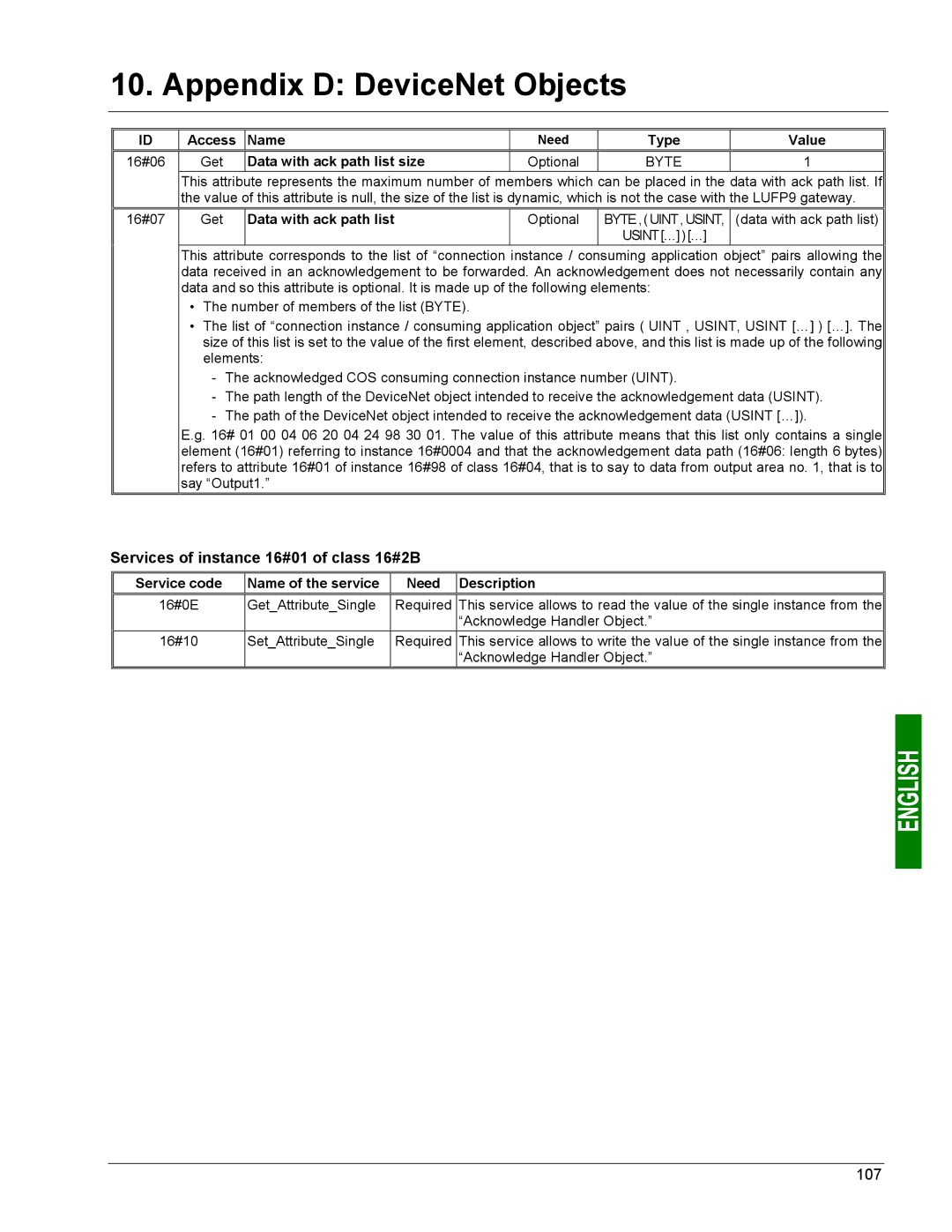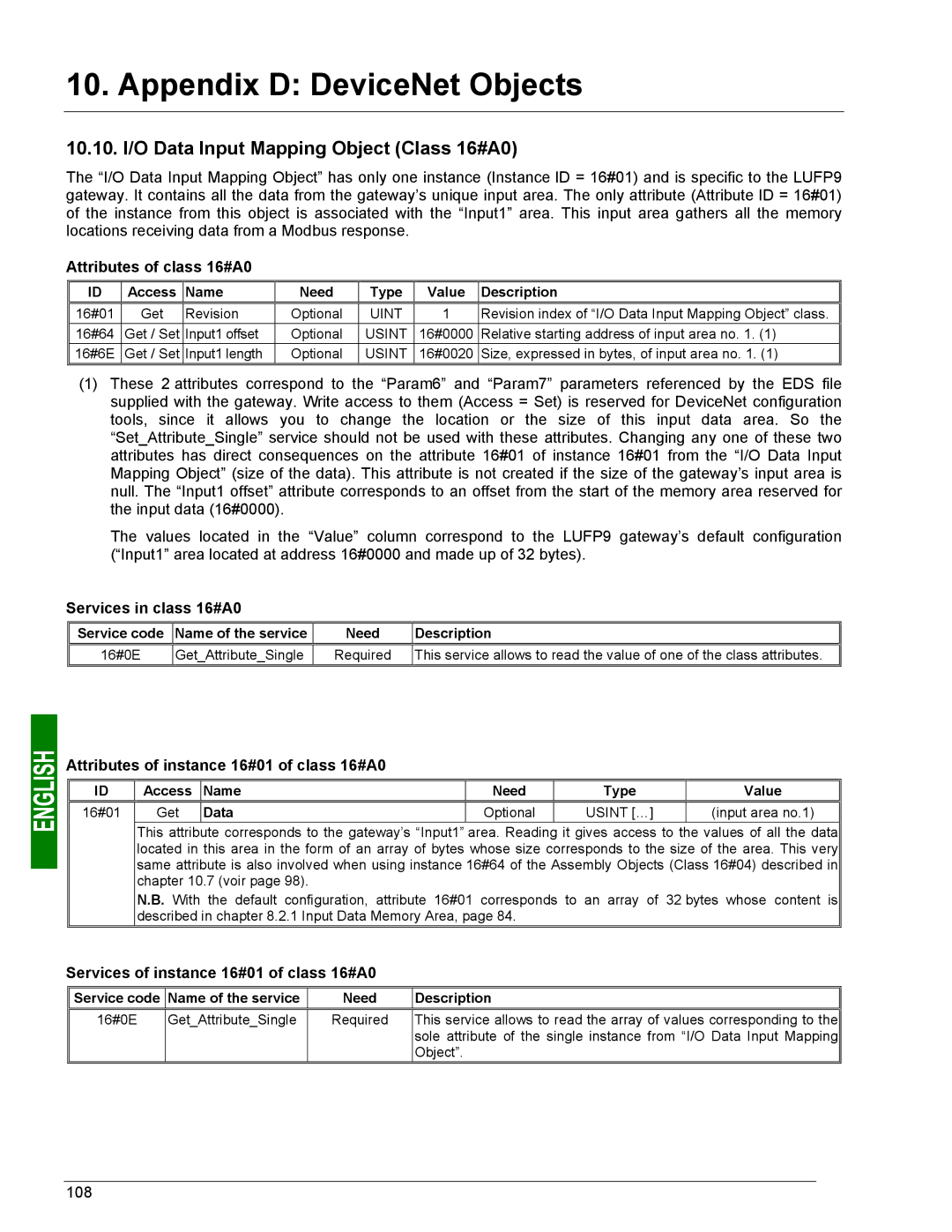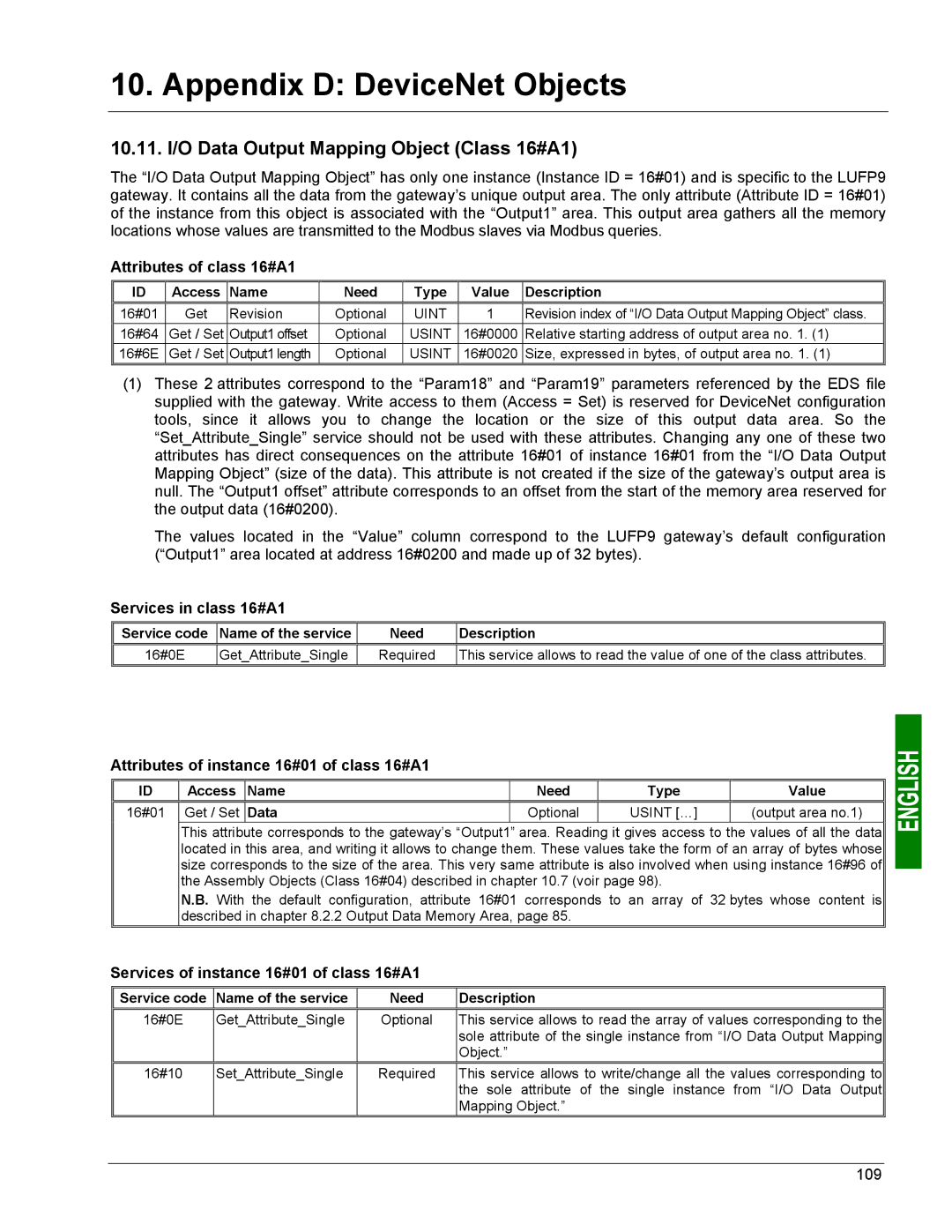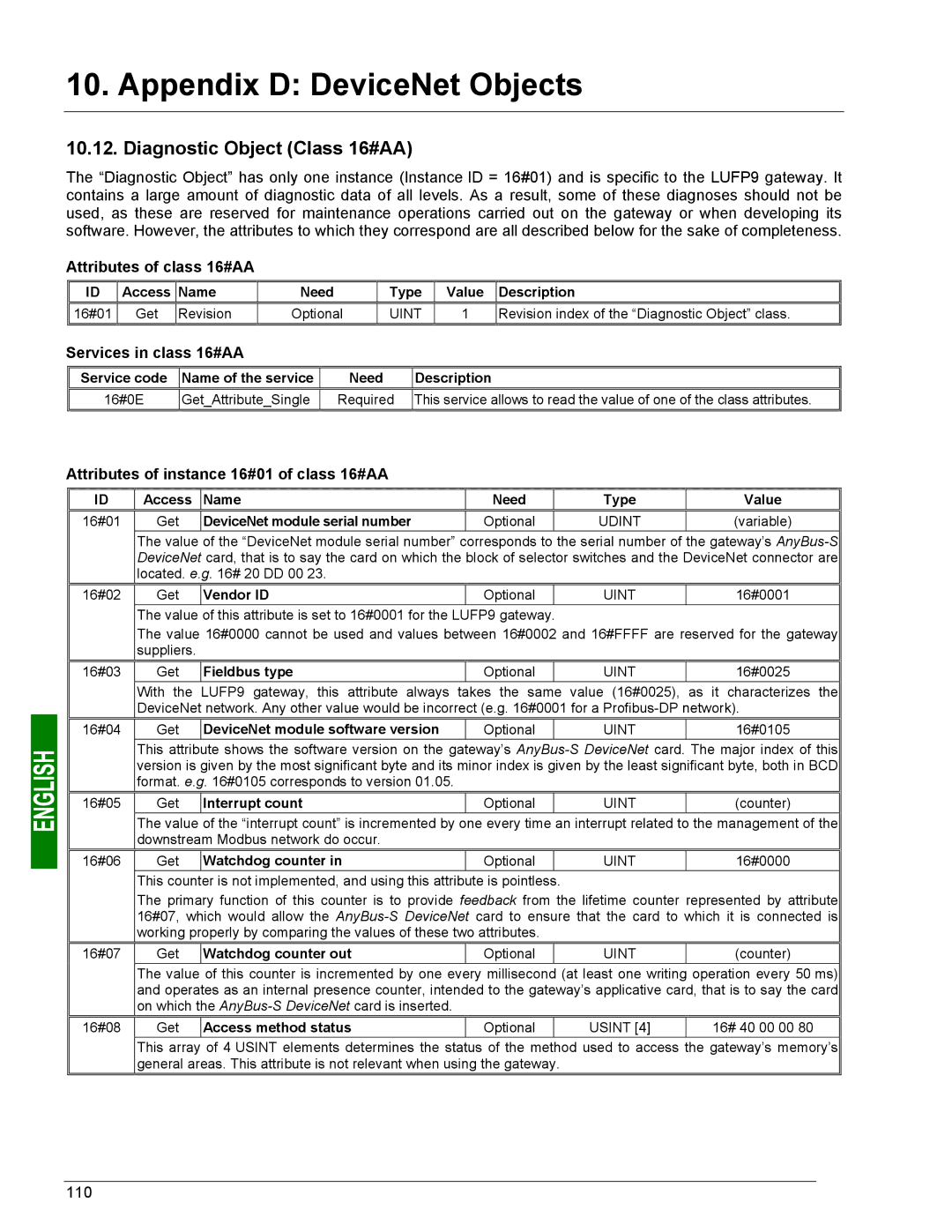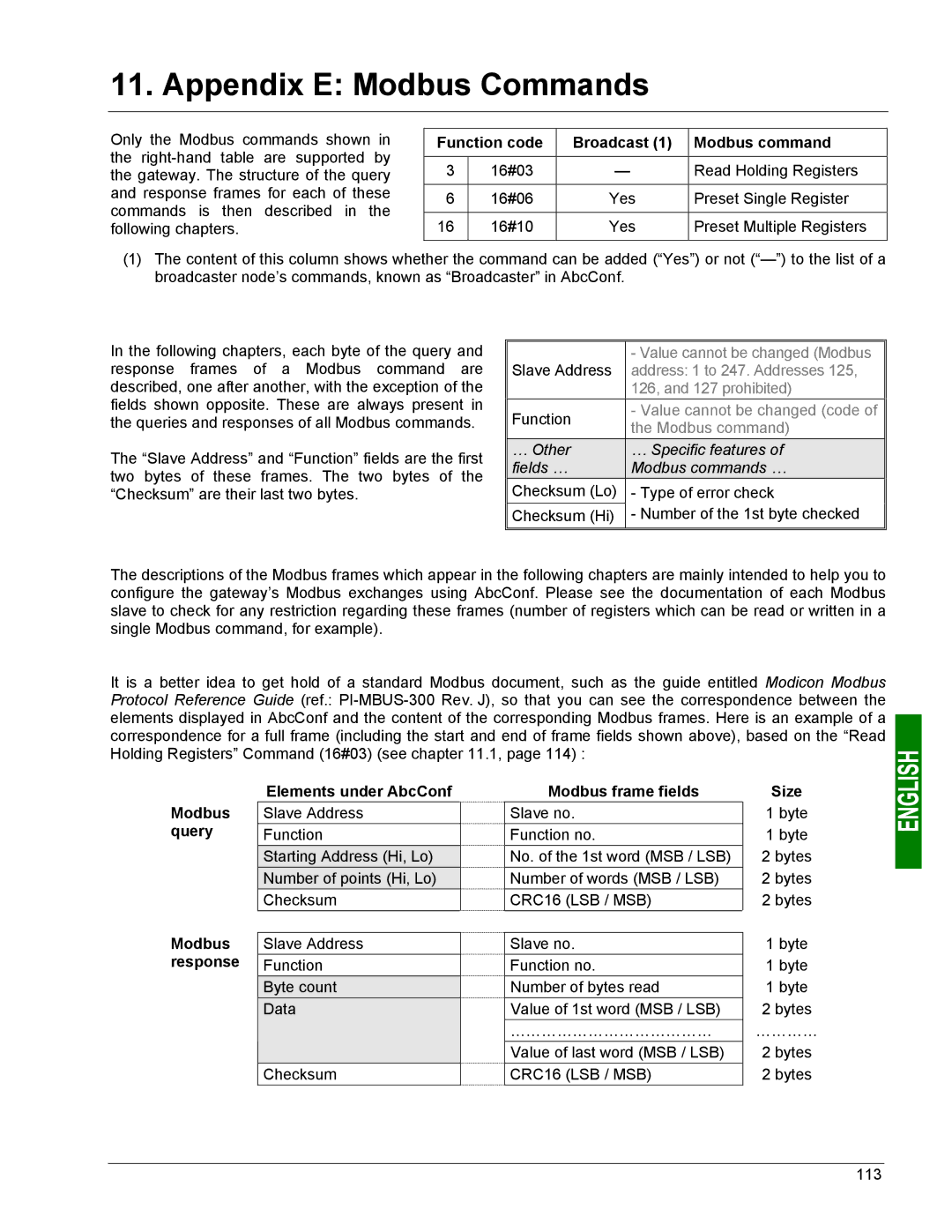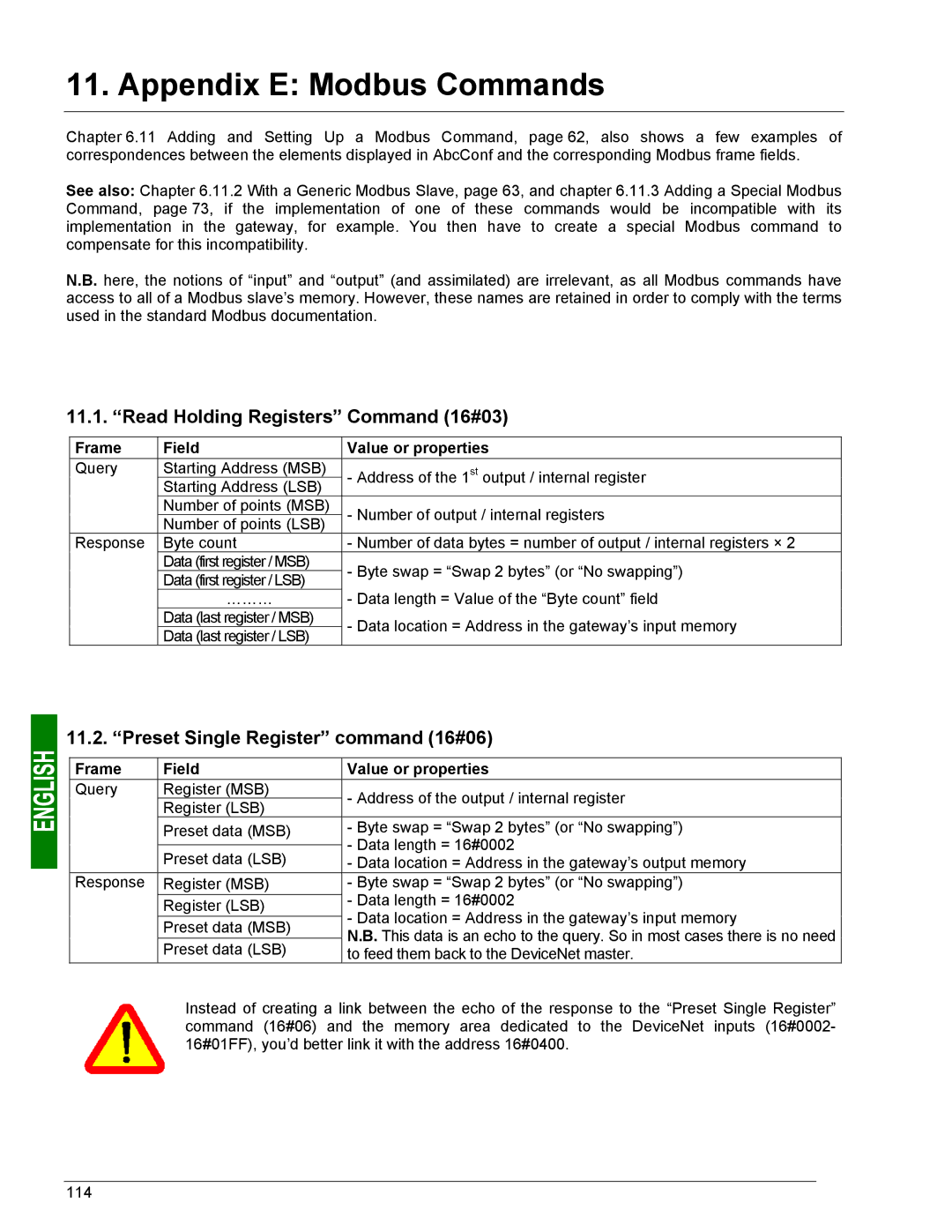
9. Appendix C: Practical Example (RSLogix 500)
9.4.
The role of this
•The
•The data the
B3:0/2 = 0.............................User command: The command for writing a parameter on a TeSys U motor starter is reset.
B3:0/3 = 1.............................A parameter is written on a TeSys U motor starter: In progress.
Reset (T4:1) .........................The timer related to the timeout of the parameter write response is reset.
N7:15 = (N7:12 × 2) + 14 .....Index in the array of results.
N7:[N7:15] = { 0 ; 0 } ............The content of the array of results is reset, but only for the motor starter affected by the write query (two successive bytes).
B3:0/6 = 0.............................Enables the update of the “trigger byte” that will trigger the emission of the query.
•The output data corresponding to the write query is updated (O:1.13 to O:1.15) and the N7:37 counter (“trigger byte”) is increased by one. This update is only done once (bit B3:0/6 used for this pupose).. Reminder: In the LUFP9 gateway’s default configuration, this output data corresponds to the personalized Modbus command “Transactions 2” of the “TeSys U n°1” node. The query frame for this personalized command is sent when the “trigger byte” located in bits
•The data from the Modbus response which corresponds to this write command is checked. The values of inputs I:1.13 to I:1.15 are compared to those of outputs O:1.13 to O:1.15 to determine whether the response to the command has arrived or not. If the slave number, the function number, the address of the parameter and its value correspond to those of the query (see above) and the number of bytes of data received is correct, bit B3:0/4 is activated in order to tell the rest of the
•The address and the value of the parameter are copied into two successive locations in the array of results (indexing carried out using N7:15), reserved for the motor starter currently being polled and only takes place if the response has arrived and its content is correct (bit B3:0/4 active). The LSB and the MSB for each of these two items of data are then swapped to restore its correct value. The timer for the response timeout (T4:1) is reinitialized to ready the program for a future write command. Bit B3:0/3 is reset to show that the command is finished, thus avoiding having to run the rest of the
91
